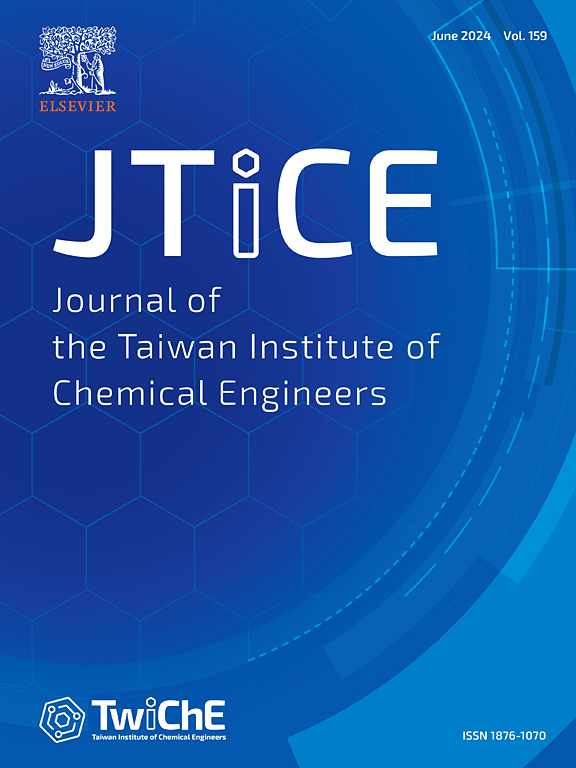Hydrochar carbon derived from pistachio shell for simultaneous electrochemical sensing of glucose and lactate in sweat
IF 5.5
3区 工程技术
Q1 ENGINEERING, CHEMICAL
Journal of the Taiwan Institute of Chemical Engineers
Pub Date : 2025-02-18
DOI:10.1016/j.jtice.2025.106008
引用次数: 0
Abstract
Background
Glucose and lactate are critical biomarkers of human health. Monitoring their concentrations in sweat is essential for diagnosing of various diseases. Due to the low concentration of biomarkers in sweat, developing highly sensitive and selective sensing material is crucial for accurate detection.
Methods
Hydrochar carbon (HC) was prepared through hydrothermal carbonization using pistachio shells. Due to the carbonyl and carboxyl functional groups on the surface of HC, the HC-modified screen-printed carbon electrode (HC/SPCE) is anticipated to significantly enhance the properties associated with electrochemical sensing.
Significant findings
A biomass-derived HC is for the simultaneous electrochemical detection of glucose and lactate. The HC/SPCE exhibited excellent selectivity, reproducibility, stability, and low LOD for the detection of glucose 0.28 µM and lactate 0.37 µM were established through differential pulse voltammetry (DPV) analysis. Furthermore, HC/SPCE exhibited remarkably in real sweat sample analysis with high recovery of 99.8 %, positioning it as a highly promising sensor candidate for portable and cost-effective on-site detection of crucial sweat biomarkers.

求助全文
约1分钟内获得全文
求助全文
来源期刊
CiteScore
9.10
自引率
14.00%
发文量
362
审稿时长
35 days
期刊介绍:
Journal of the Taiwan Institute of Chemical Engineers (formerly known as Journal of the Chinese Institute of Chemical Engineers) publishes original works, from fundamental principles to practical applications, in the broad field of chemical engineering with special focus on three aspects: Chemical and Biomolecular Science and Technology, Energy and Environmental Science and Technology, and Materials Science and Technology. Authors should choose for their manuscript an appropriate aspect section and a few related classifications when submitting to the journal online.

 求助内容:
求助内容: 应助结果提醒方式:
应助结果提醒方式:


